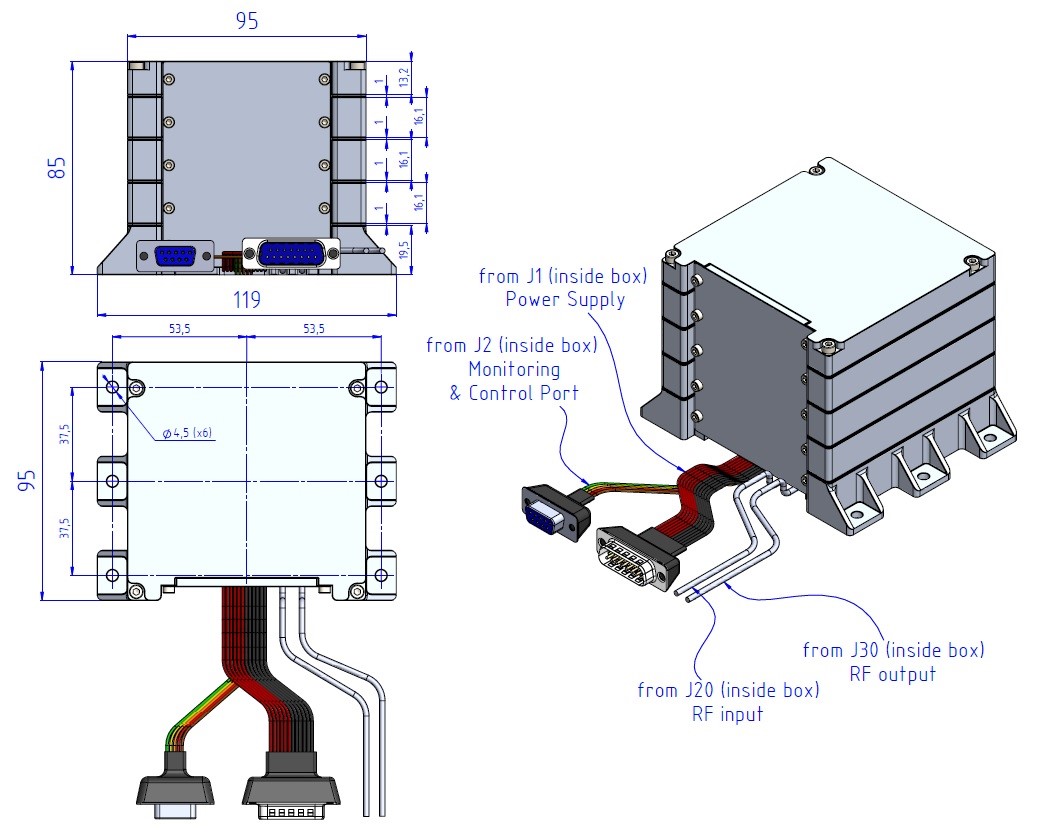-
StatusCompleted
-
Status date2020-09-21
-
Activity Code5A.054
The main idea of this project is to use FSS frequency bands for providing a low-data rate inter-satellite link between LEO-GEO.
The general target of this activity is to demonstrate the relevance of inter-satellite links to monitor and control small satellites in the LEO or retrieve mission data they collect or forward
The key challenges are two-fold: technical implementation and economic viability.
The ISL equipment (transmitter and receiver) has a high target power consumption of approximately 25W, which is on the limit of the capabilities of a 3U CubeSat. Furthermore large area deployable antennas are hard to implement in such CubeSat.
The economic viability of such service for deployment on existing telecom satellite infrastructure has been investigated, and has revealed important limiting factors: the bitrate achievable by this topology and the usage of the indicated bands, and the role of the short-listed telecom operators in the value chain.
Low-Earth-orbit (LEO) satellites are flying in an altitude between 200km and 2000km above Earth and can vary in the amount of time they are visible to a ground station (GS) for transferring data to and from the GS. For example a LEO CubeSat orbiting at a height of about 600 km above Earth, the visibility to a GS it is typically around 20 minutes per orbit, limiting the amount of data that can be exchanged. To efficiently transmit data in this way, a greater number of networked GS sites around the Earth must be used. Most of Earth’s surface is covered by water, where there cannot be a GS. This would make an application like AIS not really feasible.
However if the data is relayed to a geosynchronous-Earth-orbit (GEO) satellite, the available LEO satellite data transmission time (and amount of data) can be drastically increased. A GEO satellite is visible to a LEO spacecraft for more than one half of the LEO satellite’s orbit. In theory, two widely spaced GEO satellites can provide continuous visibility and coverage for a LEO satellite. Three GEO satellites would also provide full coverage of Earth’s territory.
Furthermore, the proposed FSS frequency bands for providing a low-data rate inter-satellite link between LEO-GEO, are available in C, Ku and Ka band. The main advantage of using these frequencies is the global availability and moderate costs compared to L-band.
The ISL equipment system design remained high level in phase 1, and remain focussed on the system level performance in relation to the economic requirements. As the project was discontinued after phase 1 due to the unfavourable conclusions of the market analysis, no further detailed design of the ISL equipment has been performed.

Figure: ISL Mechanical Concept (credit: Antwerp Space NV)
The proposed ISL equipment will provide a communication link between satellites in a LEO orbit and a satellite in a GEO orbit.
The spacecraft in which this equipment is to be implemented are 6 or 12-units CubeSats. Due to power, thermal, and dimensional constraint, it appears to be impractical to fit on CubeSats smaller than 6 units.
It is assumed that the GEO satellite acts a non-regenerative radio relay stations in orbit. E.g. it sends back to Earth what he receives maybe with only amplification and a shift from uplink to downlink frequency, therefore demodulation, decoding, re-encoding and modulation is not performed aboard the satellite
The contract is built as 2 consecutive phases:
- Phase 1 aims to study and evaluate the demonstrate the economic viability of such service for deployment on existing telecom satellite infrastructure, by early 2020.
- Phase 2: in-orbit demonstration of the communication service, following bread-boarding by the end of 2021
COMPLETED
While a clear market is developing for IoT, M2M services and for AIS/ADSB/VDES services, none will likely make use of the FSS telecom capacity for their payload communication services. The performed analysis reveal that:
- ITU requirements put a severe limit on the throughput achievable per unit of radio spectrum, which excludes most of the possible services
- Alternative communication topologies exists, which are based on shorter inter-satellite links, hence capable of supporting higher throughput
- The telecom operators that could deliver the global FSS capacity block the usage of such capacity by a prohibitive pricing policy (expressed in cost per useful data rate) and by their ambition to deliver the IoT/ M2M services based on their own infrastructure.
This conclusion buries the prospect of proceeding with Phase 2 of this contract. Consequently the project has not continued with the development of a breadboard and has been closed after phase 1.



